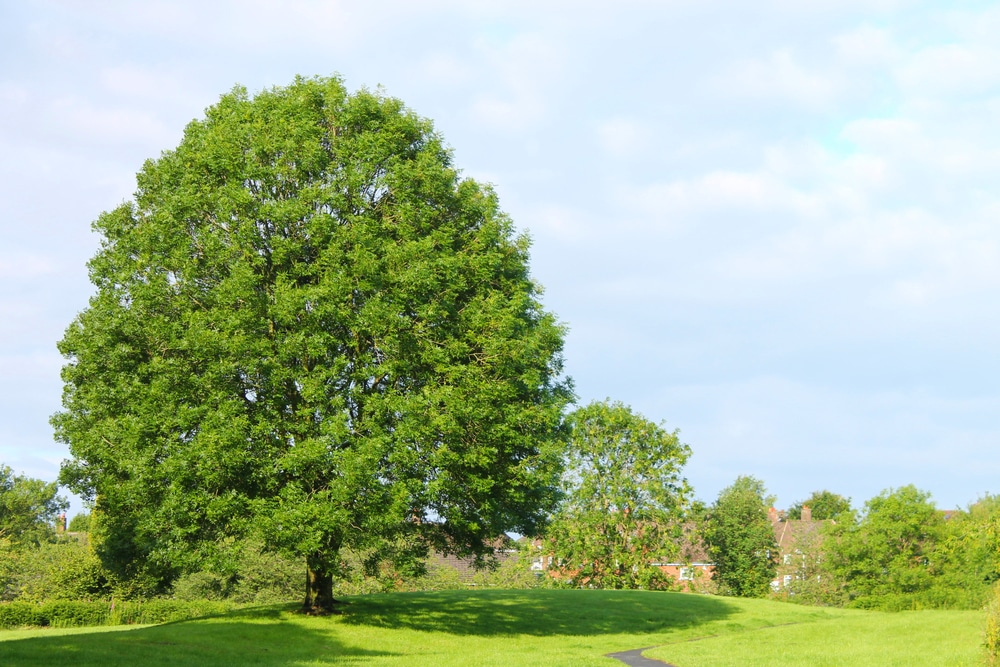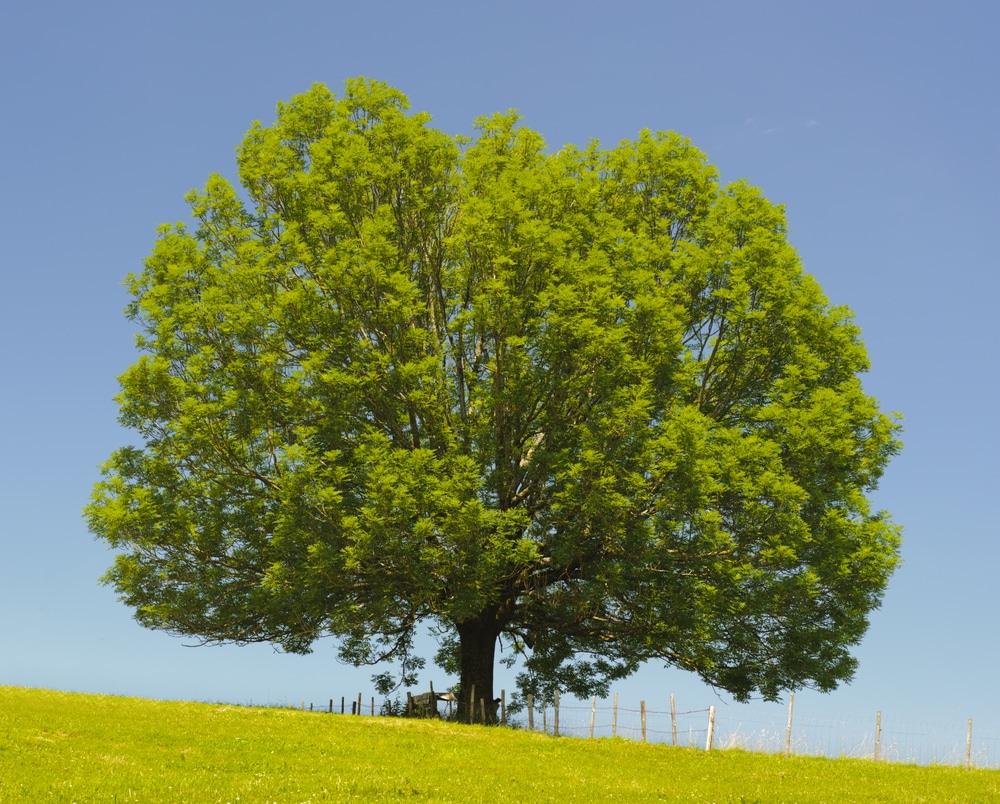Virginia is home to approximately 187 million Ash trees, according to the Virginia Department of Forestry. Four species of Ash trees comprise Virginia’s native ash tree population: black (Fraxinus Nigra), pumpkin (Fraxinus Profunda), white (Fraxinus Americana), and green (Fraxinus Pennsylvanica).
All four species of native Ash trees in Virginia exhibit excurrent growth and feature rounded, spreading crowns. Historically, White and Green Ashes have comprised a large portion of Virginia’s forests and have been a vital timber harvest crop for Virginia’s economy. Today, the cultivation and harvest of White and Green Ash trees have slowed because of an invasive pest called the Emerald Ash Borer (EAB).
EAB is a wood-boring pest native to China that hosts on and kills ash trees, including all four of Virginia’s native Ash species. EAB was introduced to the United States in the 90s. The Virginia Department of Forestry reports that EAB was first detected in Virginia in 2008, but experts believe the pest was likely present in Virginia before 2008.
Today, White and Green Ash still comprise a large portion of Virginia’s forests, but the survival of Ash tree populations in the state depends on the curtailment of EAB’s impact. EAB poses a risk for all Ash trees, but the threat is acute for Black and Pumpkin Ash, species limited in range and distribution.
The International Union for Conservation of Nature (IUCN) currently lists Black and Pumpkin Ash as critically endangered species. This health assessment of Black and Pumpkin Ashes population health will likely decline if EAB populations continue to grow and spread throughout Virginia.
Are Ash Trees Native to Virginia?
Four of the eighteen ash trees endemic to North America are natively found in Virginia: White Ash (Fraxinus Americana), Green Ash (Fraxinus Pennsylvanica), Black Ash (Fraxinus Nigra), and Pumpkin Ash (Fraxinus Profunda). White and Green Ash are common throughout Virginia, while Black and Pumpkin Ash are rare species with limited ranges.
Most tree professionals and enthusiasts will be familiar with White and Green Ash. White and Green Ash are medium to large-sized trees that thrive in riparian environments. The trees feature opposite, pinnately-compound leaves with toothed, lanceolate-shaped leaflets.
White and Green Ash are also frequently identified by their clusters of winged fruit and their coarse gray-brown bark that forms a lattice of diamonds in late adolescence. This diamond pattern becomes more pronounced in maturity and is one of the easiest ways to identify Virginia’s common Ashes.
Why Are Ash Trees Important to Virginia?
Ash trees form a large part of Virginia’s natural forested environments. These forested environments depend on the biology and abundance of Ash trees to maintain delicate ecosystem functions that provide natural resources, commercial value, and aesthetic appeal to Virginians.
Do Ash Trees Grow Throughout the Whole State of Virginia?
White and Green Ash trees grow throughout Virginia. Because of their robust biology, both White and Green Ash thrive in various low-lying and high-altitude environments in a wide range of soil compositions. The healthiest Ash trees are often found near bodies of water in loamy, porous soils.
Black and Pumpkin Ash do not grow throughout Virginia. Black Ash’s range in Virginia is limited to the northern part of the state, while Pumpkin Ash can be found sparingly along the coast.
You may also be interested in finding out which varieties of birch trees grow in Virginia.

